Timeline
1905 – Alberta becomes a province. George Hedley Vicars Bulyea appointed first Lieutenant Governor of Alberta.
1910 – In the midst of a financial boom, the Alberta Legislative Assembly approves funding to build an official residence for the Lieutenant Governor.
1911 – Construction of the vice-regal mansion begins on 28.15 acres of land in the new district of Glenora.
1913 – Government House opens officially as a vice-regal residence on October 7 with a grand reception attended by hundreds of guests. George H.V. Bulyea becomes the first of six resident Lieutenant Governors.
1919 – His Royal Highness the Prince of Wales, the future King Edward VIII, stays in the House for a time.
1932-1935 – During dire economic times, the high operating costs of Government House lead to calls for its closure.
1938 – Government House is closed as a vice-regal residence, for financial and political reasons.
1942 – All fixtures and furnishings of Government House are sold at auction. Government House is leased as a dormitory to Northwest Airlines.
1944 – Northwest Airlines leaves Government House. The Department of Veterans Affairs leases Government House for $1.00 per year as a convalescent home for disabled veterans.
1951 – The Federal Department of Veterans Affairs purchases Government House for $350,000.
1964 – The Federal Cabinet transfers ownership of Government House to the Alberta government for $1.00 and a provincial commitment to build a new convalescent home for veterans. A decision is made to use the House as the government’s official reception centre, as well as for cabinet and caucus meetings.
1966 – Veterans Affairs vacates Government House.
1975 – Government House Act is passed, and Government House Foundation is created.
1975-1976 – Major renovations modernize the House while preserving its historical integrity. Government House re-opens on Heritage Day, August 1, 1976.
1978 – Her Majesty Queen Elizabeth II, His Royal Highness The Duke of Edinburgh, and His Royal Highness Prince Andrew visit Government House during the Commonwealth Games.
1980 – Her Royal Highness Princess Margaret visits Government House.
1983 – His Royal Highness the Prince of Wales and Her Royal Highness Diana, Princess of Wales, visit Government House.
1985 – Her Majesty Queen Elizabeth, the Queen Mother, visits Government House. Government House is declared a Provincial Historic Site.
1993 – His Royal Highness Prince Edward visits Government House.
2001 – His Royal Highness Prince Edward, Earl of Wessex, and Her Royal Highness, Sophie, Countess of Wessex, visit Government House.
2005 – Her Majesty Queen Elizabeth II visits Government House to celebrate Alberta's centennial.
2013 – Government House celebrates its centennial. The Government of Canada designates Government House a National Historic Site.
2016 – Her Royal Highness The Countess of Wessex, visits Government House.
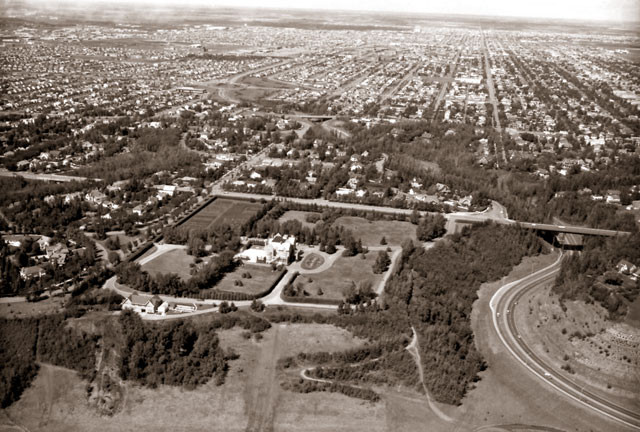
Building a new province
It was an ambitious undertaking for a young province. Alberta had only come into being on September 1, 1905 and faced massive infrastructure requirements such as roads, schools and court houses – not to mention a legislature building. Nevertheless, the province was in the midst of a financial boom and supremely confident in its future, and so pushed ahead with plans to build Government House.
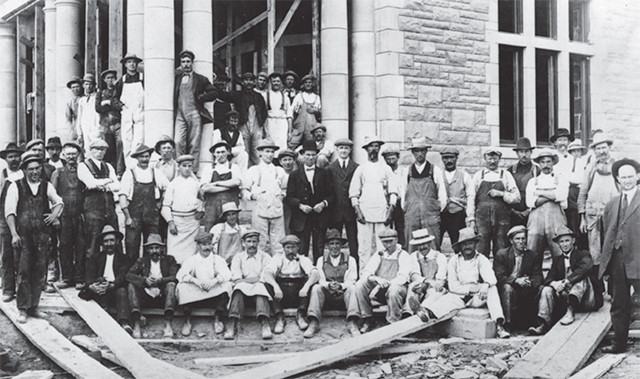
Government House was constructed by the Department of Public Works under the direction of A.M. Jeffers, chief architect of the Alberta Legislature Building. Architect R.P. Blakey was tasked to design the three-storey residence in the Jacobean Revival style.
The brick exterior walls were covered with sandstone from a quarry near Calgary and finished by stonemasons from Scotland. A large glass conservatory for plants and flowers was built, and a root cellar for produce from the large garden. Southwest of the House, the original Tudor revival style carriage house still stands. The total cost of the residence, including furnishings, was $350,000.
Originally, the House and its large gardens were secluded and almost hidden from view behind a six-foot high hedge surrounding the two exposed sides of the property bounded by 102 Avenue and 130 Street. During its early history very few Albertans knew of the building’s purpose, and even fewer had ever been inside.
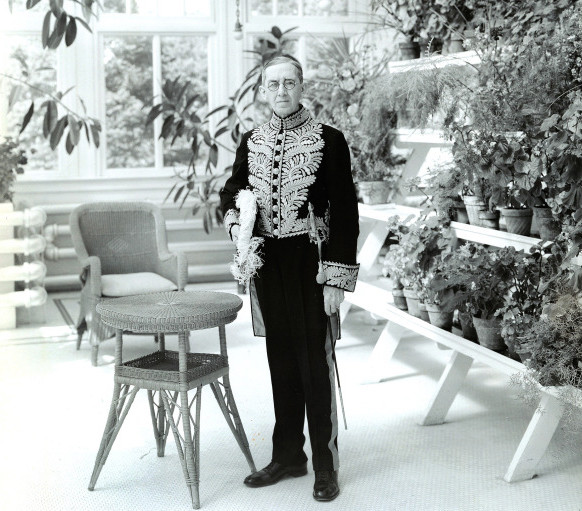
A vice-regal residence (1913–1938)
Together with his wife Annie, Lieutenant Governor George Bulyea started the long and eventful tradition of entertaining at Government House. From its opening in 1913 until 1938, the House served as a centre of social and political life in Alberta.
The lieutenant governors who lived in Government House are:
- George Hedley Vicars Bulyea, 1905–1915 (resident 1913–1915)
- Robert George Brett, 1915–1925
- William Egbert, 1925–1931
- William Legh Walsh, 1931–1936
- Philip Carteret Hill Primrose, 1936–1937
- John Campbell Bowen, 1937–1950 (resident 1937–1938)
The end of an era
Despite its grandeur, in the economic aftermath of the First World War and the Depression of the 1930s, Government House was a prime irritant for the opposition members of the Alberta Legislature. Details of the costs of furnishings and maintenance of Government House, all tabled in the legislative assembly, only served to deepen suspicions that a ‘privileged few’ were wining and dining at public expense. Newspapers of the period were filled with arguments of politicians for and against the closure of Government House. Similar arguments were raised in many provinces in this era.
After Lieutenant Governor John Campbell Bowen refused Royal Assent to three bills brought forward by Premier William Aberhart. Premier Aberhart gave the order to close Government House in March 1938. This decision forced Lieutenant Governor Bowen and his family to move to an Edmonton hotel suite.
After Government House’s official closure as a vice-regal residence, the gates to the grounds were locked and the house stood empty until 1942. During this time there were many discussions about how best to make use of the empty mansion, perhaps as a sanatorium or even a museum.
Auctioning off the furnishings
On October 21, 1942, a three-day public auction was held to disperse the furniture and contents. Some 800 lots of furnishings that had cost $75,000 in 1912 were sold for only $19,642 at auction. A search continues to this day to locate items that were sold off and return them to Government House.
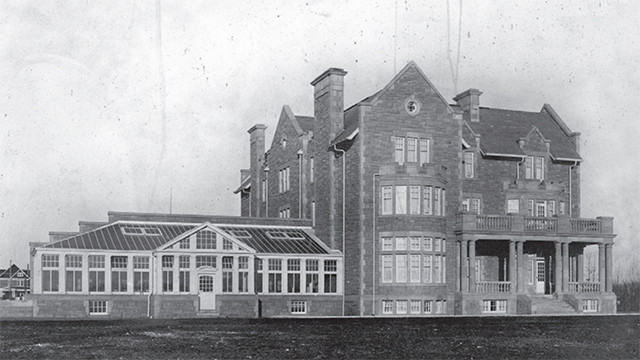
Dormitory for WWII pilots (1942–1943)
In 1942, the government leased Government House to Northwest Airlines, an American company engaged in contract work on the construction of the Alaska Highway. The House was used as temporary office and residential space for airline personnel. At that time, the airline was under contract to the American Army to ferry aircraft and aircraft parts from the US to Fairbanks, Alaska during WWII.
During this period, many alterations were made to the building to accommodate the requirements of a convalescent hospital, among them the installation of an elevator large enough to take hospital beds and gurneys, and an unsightly steel fire escape on the north side of the building. The ornate borrowed daylight shaft – that passed through each of the upstairs floors from the glazed section of the main roof – was boarded over to give more floor space. Other changes were made, as required, including partitioning various areas of the floors.
A home for vets (1944–1964)
After Northwest Airlines cancelled its lease, the House was leased for $1.00 a year to the Government of Canada as a convalescent hospital for wounded veterans. The federal government continued to lease the house until 1951 when it purchased the building outright for $350,000. Government House evolved from a convalescent home to a veterans’ home that housed approximately 75 wounded soldiers of the First and Second World Wars, and even a few from the Boer War.
Reverting ownership to the province (1964)
By the 1960s, post-war prosperity brought on by the 1947 Leduc oil discovery, along with anticipation of the centenary of Confederation, saw the province begin planning a new provincial museum and archives. It would be built on the north side of the Government House property. The Royal Alberta Museum opened to the public on December 6, 1967 under its original name – The Provincial Museum of Alberta.
While the new museum was being planned, the federal government sold Government House back to the province in 1964. The decision was made to use the House as the government’s official reception centre, as well as for cabinet and caucus meetings. In November 1966 the residents of Government House were moved to the new Mewburn Veterans Hospital, adjacent to the University of Alberta hospital.
Hasty renovations made in 1968 by Alberta Public Works did little to improve the advanced deterioration of the building’s interior. Entire walls were removed, and what had been the drawing room and dining room became a long dining room running from the front to back of the building, large enough to accommodate the majority caucus members.
Although functional as a caucus chamber, by the mid-1970s the House was badly in need of major renovations. It had been built before the comparatively recent use of wall and ceiling insulation and vapour barriers, so any moisture inside tended to escape to the interior of the walls upward to the roof. In winter, this caused a frost build-up on the inside of the roof and walls, adding stress to the roof rafters and stone wall heads.
A major renovation
Over 1975-1976, extensive renovations were overseen by Mr. Alan Traish, Alberta Public Works principal architect, who had instructions to alter the interior of the building yet maintain its historic appearance and character. A crew of 60 people worked on the project.
A primary challenge was the roof: the south end had to be opened and long steel spandrels (custom manufactured) were slid in from south to north, adding much-needed support.
Next, a large section of the west-side sandstone wall was carefully dismantled to facilitate the installation of new heating boilers, updated plumbing, electrical wiring and air conditioning, and to accommodate a new wider stairway to all floors in compliance with national fire regulations. The west wall and foundation were also extended to the west by 18 feet.
During the renovation, new sandstone was carefully matched to the original, and the steel fire escape on the north side, an eyesore since installation in the 1950s, was removed. These were the only changes made to the exterior of the building. No effort was made to replace the original glass conservatory on the west side, which had been torn down in 1967 to make room for a semi-circular drive.
Modern alterations to the interior were carefully completed within the guidelines of the preservation of historic buildings. Most of the original entranceway woodwork, and the cloakrooms, foyer, office, library and music room were restored as close as possible to their original décor. Doorways on each floor were cut through the west wall for access to the stairway/fire escape.
The plaster work on the walls and ceilings of the long drawing /dining room was extensively and beautifully repaired. In this area, some very ornate cast plaster ceiling roundels and frieze work were installed, all featuring Alberta’s theme of wheat and the Alberta rose. The main stairway was maintained as originally designed and a smaller elevator replaced the hospital elevator installed in the 1940s.
The second floor rooms were returned to their original layouts, each named after a once-resident Lieutenant Governor. Modern washrooms were installed on each of the stairway landings with two more added in the basement. Other improvements were made to the original service stairway.
The most dramatic changes to the house were made to the third floor rooms. Today, most of this floor area is now completely open from wall to wall. The original ceiling was opened to the attic to create a huge, domed space. Two concentric doughnut-shaped oak and brass tables were installed as seating for conference or caucus meetings.
On Heritage Day, August 1, 1976, a revitalized Government House, incorporating the Alberta Government Conference Centre, was officially re-opened.
Government House Foundation (1975-2016)
In December 1975 the provincial government made clear its commitment to maintain this historic site when it passed the Government House Act, creating the Government House Foundation. The foundation was charged with advising the minister responsible for cultural institutions on the preservation of Government House, promoting its historical and architectural significance, and acquiring artifacts to be used or displayed in the House.
National Historic Site and Provincial Historic Resource
The foundation was instrumental in having Government House declared a Provincial Historic Resource in 1985, and a National Historic Site in 2013. These designations ensure this historically significant building will be preserved for present and future generations of Albertans to enjoy.
Today responsibility for the care and maintenance of the building is the responsibility of the Alberta Protocol Office and Alberta Infrastructure. Government House continues to be well-used, hosting a wide variety of high level government, vice-regal and state functions, as well as regular public tours. Find out how to plan your visit.
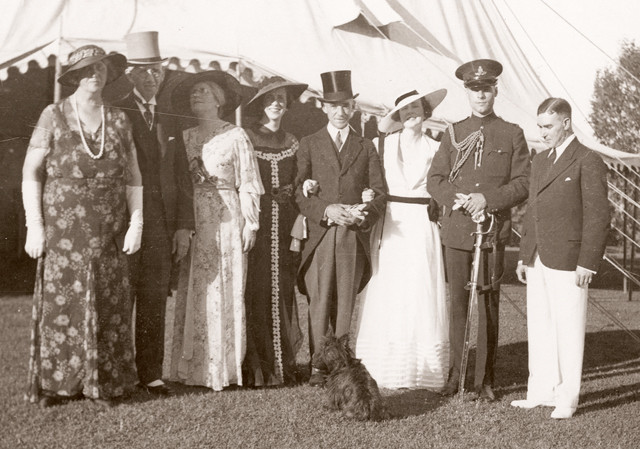
Entertaining
While used primarily today for hosting high-level government functions, Government House was a centre of social and political life in Alberta until 1938, when the province withdrew public funding of this state residence.
In the early days when Government House was used as a vice-regal residence, the chatelaine of the house (wife of the lieutenant governor) would host many elaborate functions, including teas and receptions for distinguished members of the community. Visitors were greeted at the ceremonial porte-cochère, or main porch-style entrance, facing the east driveway. Edmonton newspapers would report extensively on ‘who was seen’, describe in minute detail what visiting ladies were wearing, and include elaborate particulars of how the House was decorated.
First formal reception
An article from the January 16, 1914 edition of the Edmonton Journal describes the first formal reception ever held at Government House:
“The first reception of His Honor, the Lieutenant-Governor and Mrs. Bulyea in the new Government house yesterday afternoon drew a steady stream of callers. In fact, the whole of Edmonton seemed to be out and certainly enjoyed this beautiful home and ready welcome which always awaits any one who enters its doors, from His Honor and the sweet and gracious mistress.”
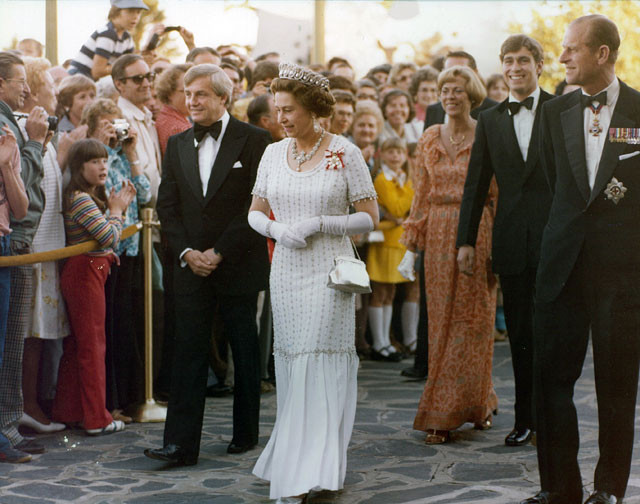
Visiting dignitaries
Since 1976, the Alberta government has used the elegant historical surroundings of Government House to host many international visitors who pay official visits to the province. Visitors have included Her Majesty Queen Elizabeth II, His Holiness John-Paul II and His Highness the Aga Khan, as well as ministers representing national governments and diplomatic visitors.
Quick facts
- During his 1919 stay, His Royal Highness the Prince of Wales often went for a jog along Edmonton’s riverbank in what’s now Government House Park.
- Lieutenant Governor Primrose (1936–1937) was the first Lieutenant Governor of Alberta to die in office. He was given the first state funeral in the history of Alberta.
- The last Lieutenant Governor to live in Government House was John Bowen. He was forced to move out in 1938 during a dispute with Premier William Aberhart regarding the signing of some bills. Electricity to the House was eventually shut off, forcing the Lieutenant Governor and his family to move.
- From 1949 to 1964, the veterans residing in Government House hosted an annual tea and bazaar to sell their handicrafts to the visiting public. Some of these pieces are displayed today on the third floor.
- In October 1971 Soviet Premier Alexei Kosygin attended a state luncheon at Government House (and was invested as an honorary chief of the Ermineskin Cree Nation). Just hours after he left, a part of the main dining room ceiling collapsed when a chandelier fell to the ground.
- His Holiness John Paul II had a brief rest in the Primrose Room on the third floor during his tour of Canada in 1984.
- After attending a banquet at the House with Prince Charles in 1983, Diana, Princess of Wales walked out on the balcony to greet the crowd, which started a spontaneous chorus of Happy Birthday. The princess turned 22 the following day, on July 1.
- Government House is reported to be haunted. Papers are heard being shuffled, the elevators will move from floor to floor without anyone operating them, and staff and visitors report feelings of ‘being watched’.
Share your story
Do you have a story or memory about Government House? We’re looking for information about the building itself, the people who visited, lived or worked here, and events that took place in the House or on its grounds. If you have any stories that can help us fill in the history of this important historic place, please contact us.
We’re also looking for original pieces that were sold at auction in 1942 after Government House was closed as a vice-regal residence.
Contact us
Phone: 780-427-2281